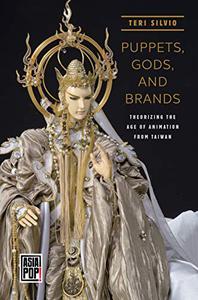
Teri J. Silvio, Allison Alexy, "Puppets, Gods, and Brands: Theorizing the Age of Animation from Taiwan"
English | 2019 | ISBN: 0824881168, 0824876628 | PDF | pages: 290 | 17.9 mb
The early twenty-first century has seen an explosion of animation. Cartoon characters are everywhere―in cinema, television, and video games and as brand logos. There are new technological objects that seem to have lives of their own―from Facebook algorithms that suggest products for us to buy to robots that respond to human facial expressions. The ubiquity of animation is not a trivial side-effect of the development of digital technologies and the globalization of media markets. Rather, it points to a paradigm shift. In the last century, performance became a key term in academic and popular discourse: The idea that we construct identities through our gestures and speech proved extremely useful for thinking about many aspects of social life. The present volume proposes an anthropological concept of animation as a contrast and complement to performance: The idea that we construct social others by projecting parts of ourselves out into the world might prove useful for thinking about such topics as climate crisis, corporate branding, and social media. Like performance, animation can serve as a platform for comparisons of different cultures and historical eras.
Teri Silvio presents an anthropology of animation through a detailed ethnographic account of how characters, objects, and abstract concepts are invested with lives, personalities, and powers―and how people interact with them―in contemporary Taiwan. The practices analyzed include the worship of wooden statues of Buddhist and Daoist deities and the recent craze for cute vinyl versions of these deities, as well as a wildly popular video fantasy series performed by puppets. She reveals that animation is, like performance, a concept that works differently in different contexts, and that animation practices are deeply informed by local traditions of thinking about the relationships between body and soul, spiritual power and the material world. The case of Taiwan, where Chinese traditions merge with Japanese and American popular culture, uncovers alternatives to seeing animation as either an expression of animism or as "playing God." Looking at the contemporary world through the lens of animation will help us rethink relationships between global and local, identity and otherness, human and non-human.
Fikper
u4syr.P.G.a.B.T.t.A.o.A.f.T.rar.html
Rapidgator
u4syr.P.G.a.B.T.t.A.o.A.f.T.rar.html
NitroFlare
u4syr.P.G.a.B.T.t.A.o.A.f.T.rar
Uploadgig
u4syr.P.G.a.B.T.t.A.o.A.f.T.rar
